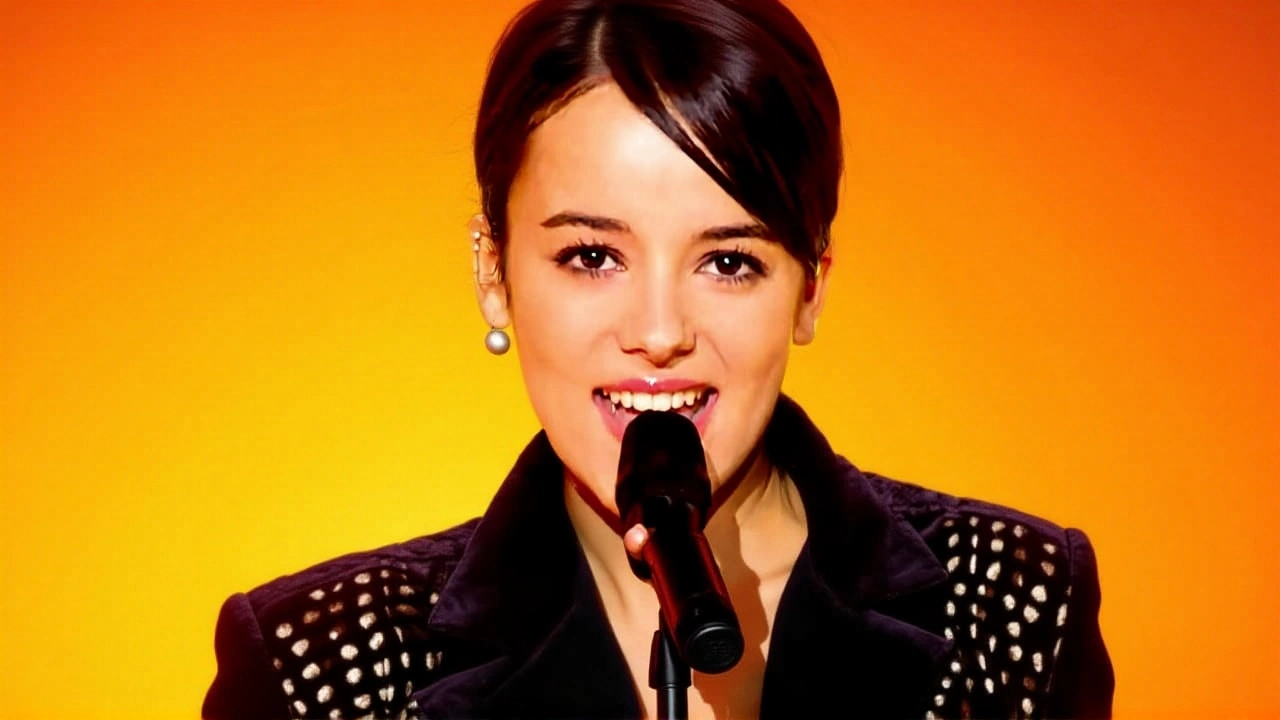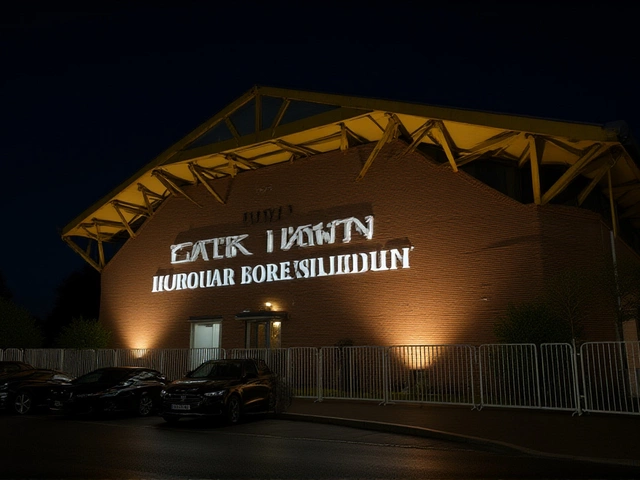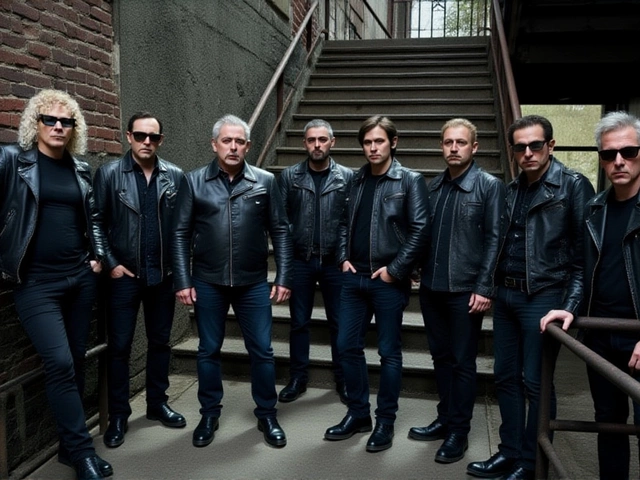When Alizée stepped onto the stage of La chanson numéro 1 in early 2016, she didn’t just sing a cover—she reclaimed a song. Her sultry, sun-drenched rendition of Madonna’s 1986 Latin pop anthem La Isla Bonita didn’t just go viral. It became the defining moment of her career, amassing exactly 190 million views on YouTube by November 2025—more than Madonna’s own live versions. And the fans? They didn’t just watch. They declared it hers.
From Studio Secret to Global Phenomenon
Alizée had recorded La Isla Bonita back in June 2008, but it was tucked away as a bonus track on the Tour Edition of her third album, Psychédélices. No one heard it. No one talked about it. Until February 15, 2016, when the French television performance—filmed in an intimate studio with nothing but a spotlight, a beat, and her bare feet—was uploaded to her official YouTube channel. The video, 3 minutes and 47 seconds long, was a revelation. Her voice, light as a Mediterranean breeze, floated over a slow-burning Latin groove. Her movements weren’t choreographed; they were instinctive. Like the tide pulling sand. Viewers didn’t just click ‘like.’ They rewound. They shared. They cried.Why This Cover Stole the World’s Heart
Madonna’s original was groundbreaking—a pop queen dipping her toes into Latin rhythms at a time when the genre was still niche in Western charts. But Alizée’s version? It didn’t imitate. It inhabited. She didn’t sing about the island—she made you smell the salt, feel the heat, hear the distant guitar. And the timing? Perfect. In 2016, the world was hungry for authenticity. No autotune. No pyrotechnics. Just a 33-year-old Frenchwoman in a simple dress, moving like she’d been waiting her whole life to sing this song. Fan comments from 2025 still echo the same awe: “This has been my favorite version for years, still is in 2025. Alizée owned it. It’s hers now.” Another wrote: “Absolutely stole this! Every note and movement perfect like a warm summer breeze!” These aren’t just nostalgia. They’re testament. The cover didn’t fade. It fossilized into pop culture.
A Decade Later, the Song Still Breathes
On September 7, 2025, Alizée brought La Isla Bonita to L’Olympia, the legendary Parisian venue at 28 Boulevard des Capucines in the 9th arrondissement. The performance, captured by Paris-based creator Ferris Durandochine, ran 3 minutes and 46 seconds—almost identical to the 2016 version. It drew 4,600 views in its first days. Not viral. Not explosive. But meaningful. Because it proved something: this wasn’t a fluke. It wasn’t a moment. It was a legacy. The fact that she chose to perform it again, nearly a decade after its viral explosion, tells us everything. She didn’t need the numbers anymore. She performed it because the song still lives in her. And so do her fans.The Quiet Power of a French Woman in a Latin Song
There’s something quietly revolutionary about this. A French artist, known for her Francophone pop hits like J’en ai marre! (her second-most-viewed YouTube performance, recorded on March 2, 2015, during the same TV show), takes on an American icon’s Latin classic—and not only matches it, but surpasses it. The Music Man’s November 21, 2025 report called it a landmark in cross-cultural adaptation. And they’re right. Alizée didn’t translate the song. She transfigured it. Madonna’s version was a global pop statement. Alizée’s was a personal prayer. One was made for stadiums. The other, for quiet rooms at 2 a.m., headphones on, heart open.
What’s Next for Alizée?
No announcements have been made about future tours or new recordings featuring La Isla Bonita. But if the 2025 L’Olympia show is any indicator, the song isn’t retired—it’s resting. Waiting. Like a tide pulling back before it crashes again. For now, Alizée remains focused on her studio work, but fans know: if she ever steps back on stage, La Isla Bonita will be there. And so will they.Frequently Asked Questions
How did Alizée’s version surpass Madonna’s in views?
Madonna’s official live performances of "La Isla Bonita" have not been officially uploaded to YouTube as high-quality, standalone videos. Alizée’s 2016 performance, however, was professionally filmed, emotionally raw, and perfectly timed for the rise of viral music content. Its 190 million views reflect not just popularity, but cultural resonance—fans treated it as a definitive version, not a cover.
Why is this cover culturally significant?
Madonna’s original was the first major Latin pop hit by a Western pop star. Alizée’s version, sung in French-accented English with a distinctly Mediterranean sensibility, represents a rare case of a non-Latin artist reinterpreting the genre with emotional authenticity rather than exoticism. It bridges French pop and Latin rhythm in a way few artists have managed, making it a milestone in global pop adaptation.
Was "La Isla Bonita" Alizée’s first public performance of the song?
Yes. Though she recorded it in 2008 for her album’s Tour Edition, Alizée never performed it live or on television until February 2016 on "La chanson numéro 1." That performance was its public debut, turning a hidden studio track into a global sensation nearly eight years later.
How does this compare to her other popular performances?
Her second most-watched YouTube video is "J’en ai marre!" from a March 2, 2015, appearance on the same TV show. While that performance showcased her signature dance style and vocal playfulness, "La Isla Bonita" surpassed it by over 185 million views. The difference? The emotional depth and universal appeal of the song transformed it from a fan favorite into a generational touchstone.
Why did Alizée perform it again in 2025 at L’Olympia?
The 2025 performance wasn’t a comeback—it was a homecoming. With no new album or tour announced, the L’Olympia show signaled that the song still matters to her. The 4,600 initial views may seem modest, but for a surprise, intimate performance at a historic venue, it reflects loyal, enduring fandom—not fleeting virality.
Is there a chance Alizée will release a new version?
No official plans have been announced. But given her history—releasing the song quietly in 2008, then unleashing it live in 2016—it wouldn’t be surprising if she re-recorded it in a new arrangement, perhaps with acoustic or orchestral elements. For now, the 2016 version remains untouchable.






